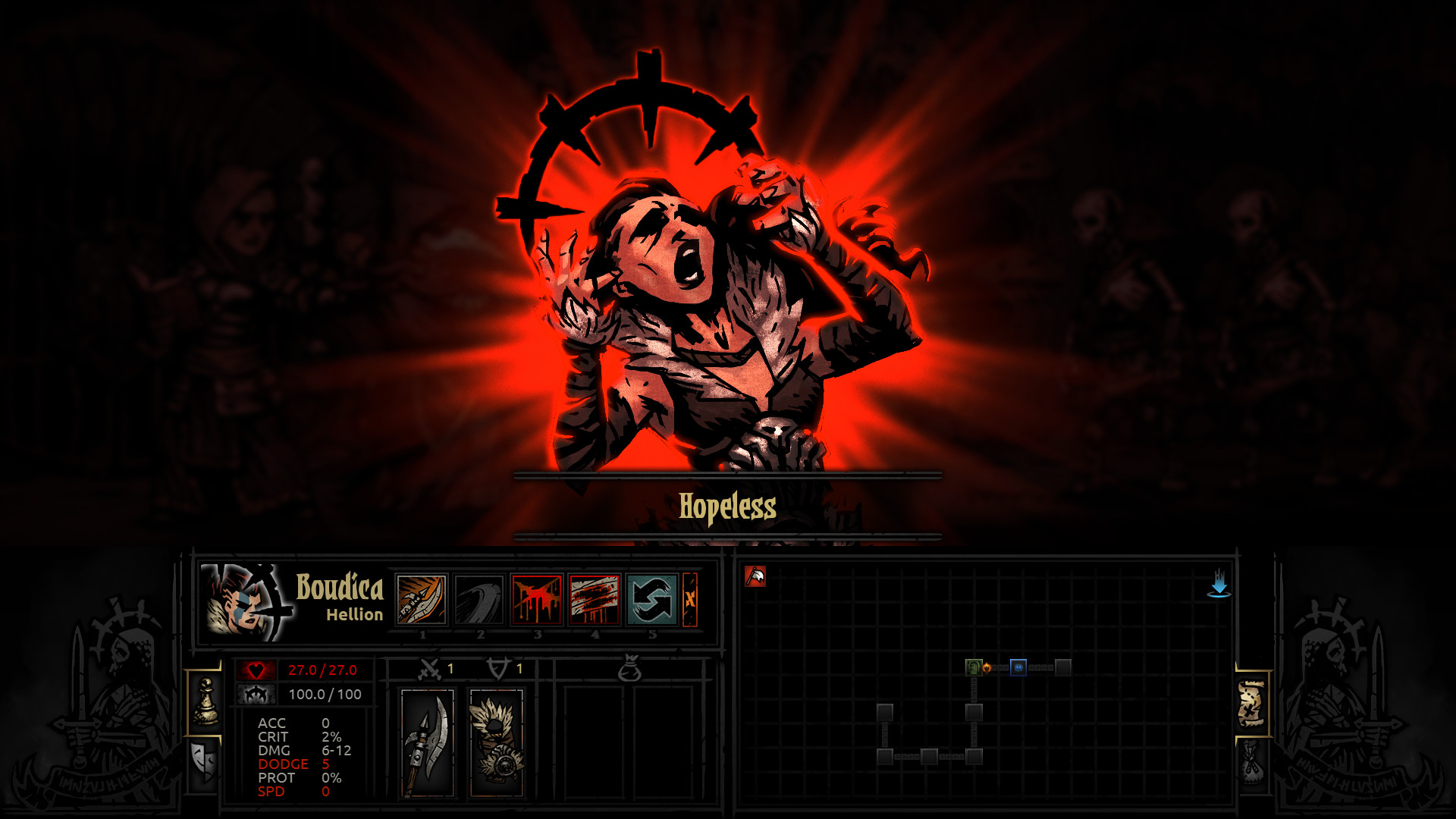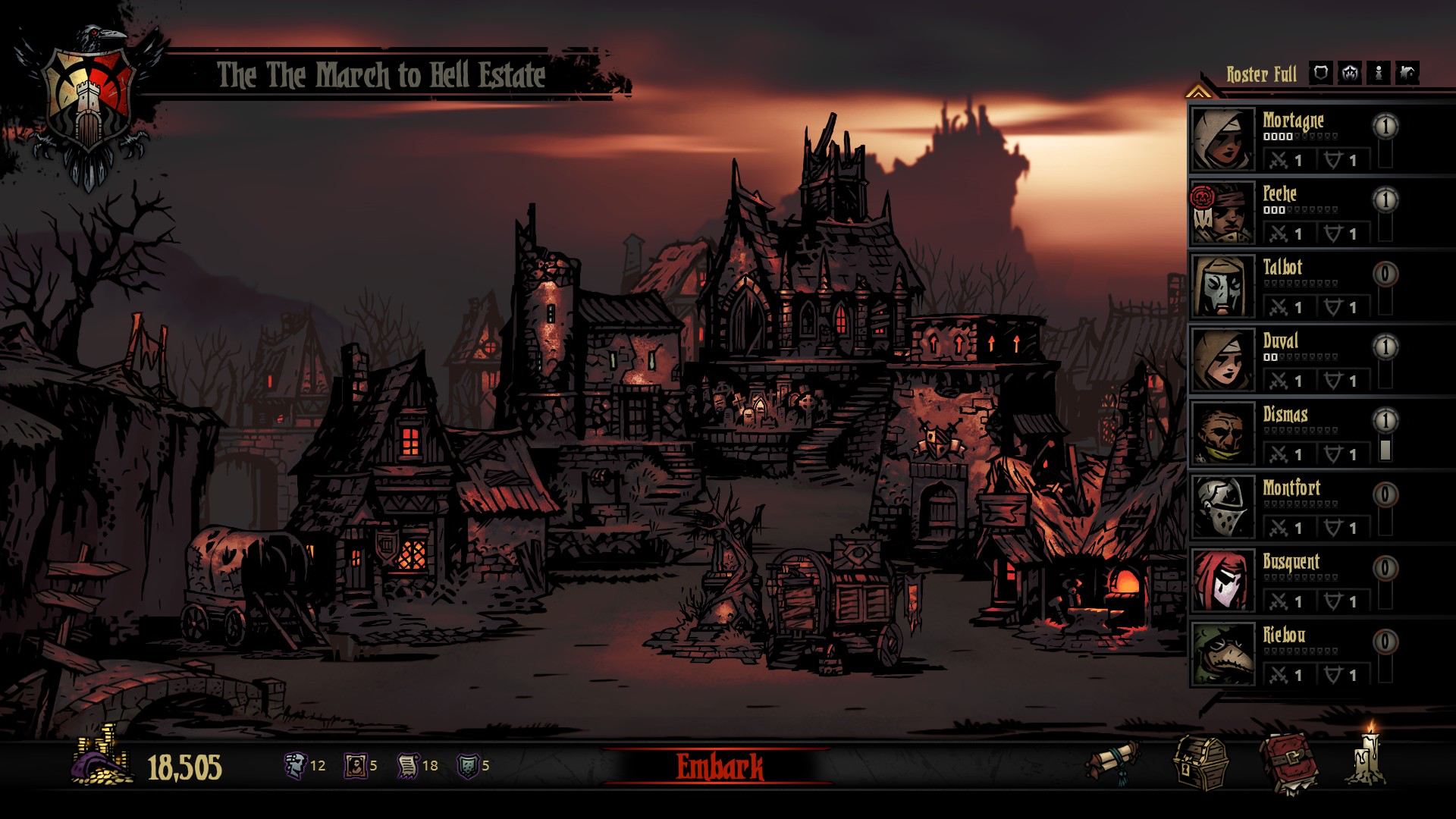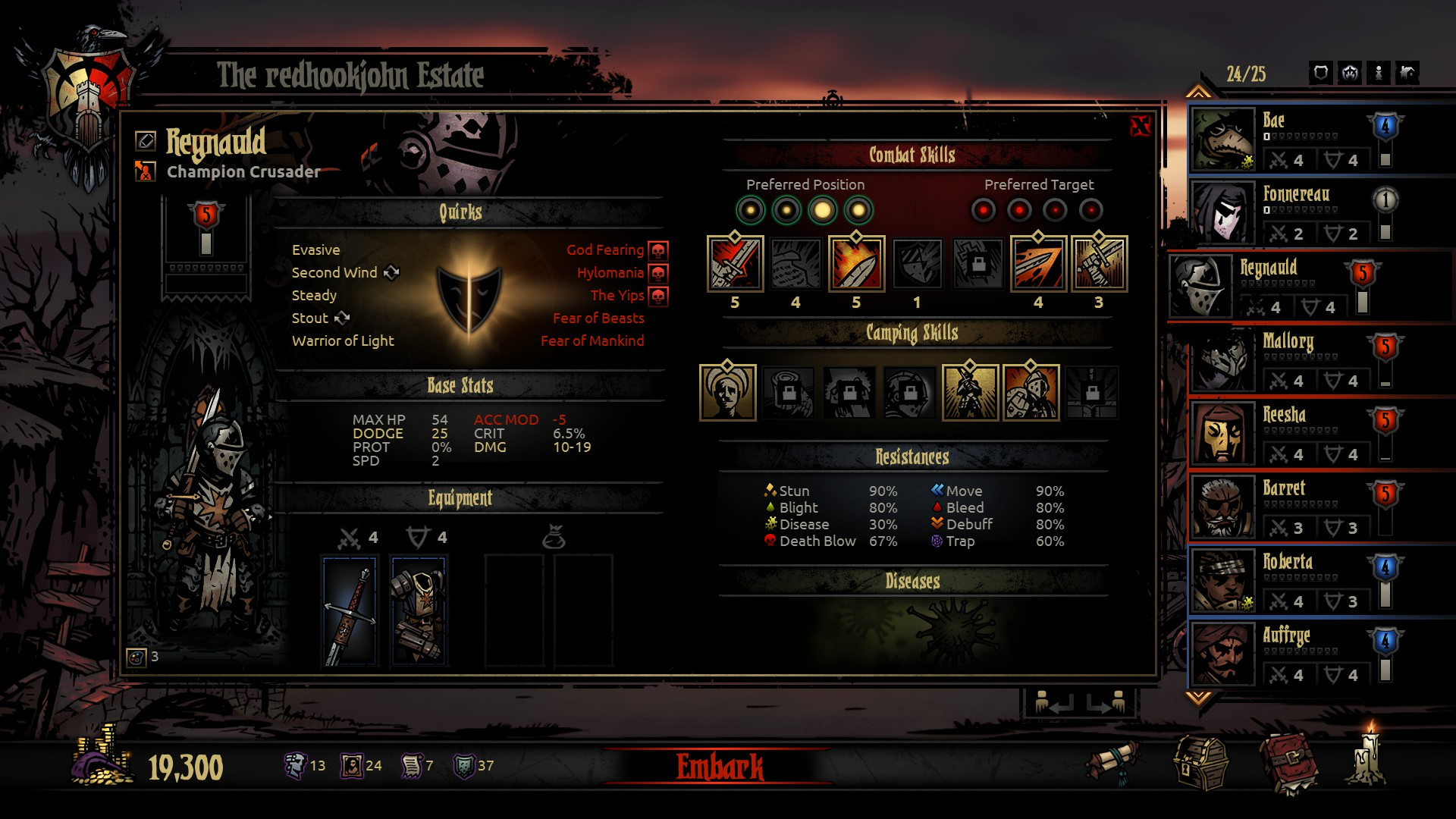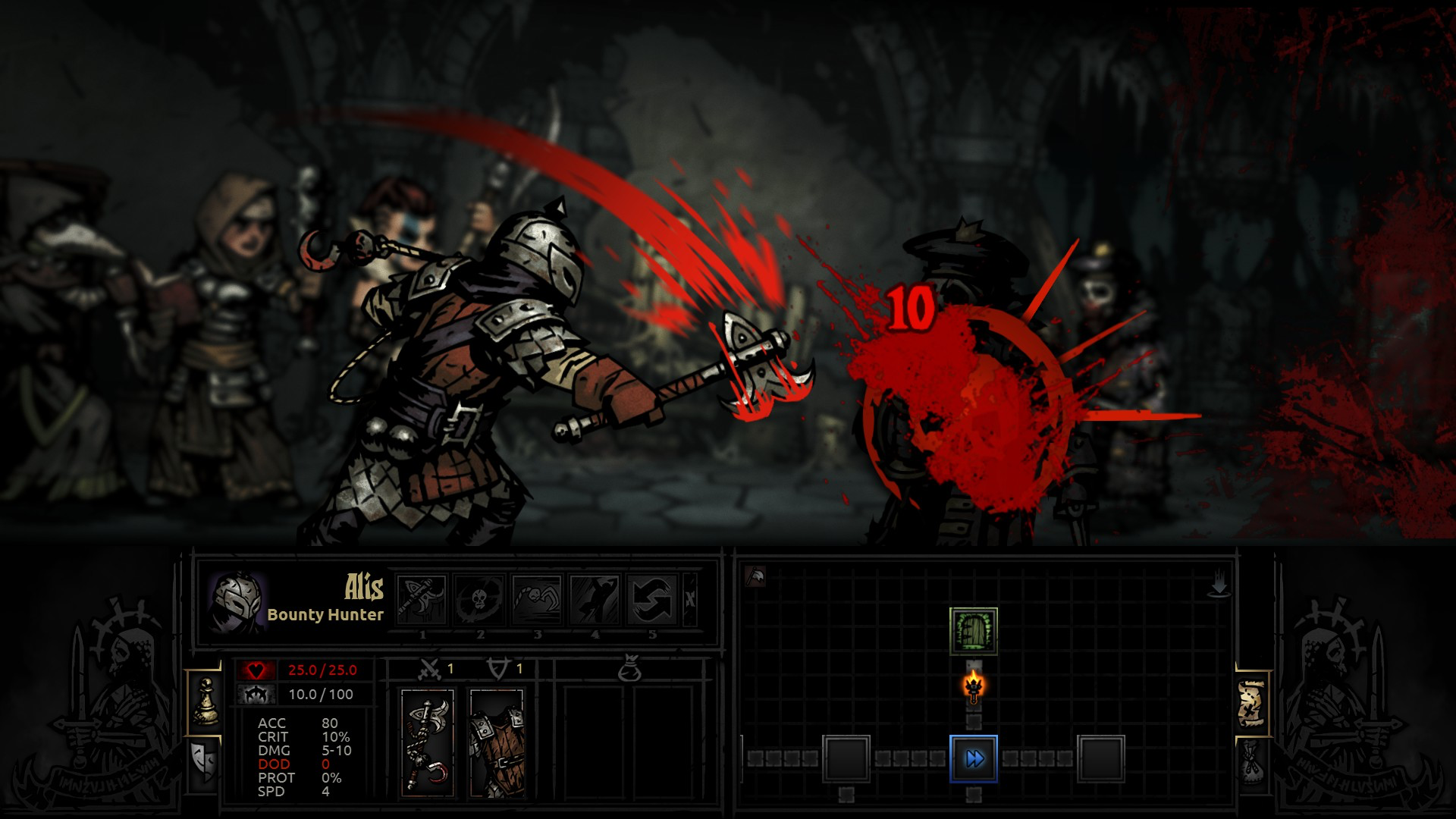
One of my favourite games of the past few years is a title called Darkest Dungeon.
Developed by B.C.-based Red Hook Studios, Darkest Dungeon is a punishing role-playing game that attempts to set itself apart from its genre peers by asking the question, how would someone respond to the psychological trauma of losing one of their comrades or seeing an unspeakable horror?
To the best of my knowledge, it’s one of the few games that has attempted to model stress, fear and madness mechanically, and it’s one of the major reasons why it’s so compelling.

Darkest Dungeon first came out on PC went when it launched on Steam Early Access in 2015. After making the jump to PlayStation 4, PlayStation Vita and iOS, the game is now available on Nintendo’s hot new portable console.
Rather than offer another review of Darkest Dungeon, of which there are already countless online, I thought it best to tackle whether the Switch version is worth the money.
Darkest Dungeon is a marathon made up of countless sprints.
The overall goal of the game is to assemble multiple teams of four heroes that can conquer the game’s titular final dungeon. Before getting there, however, the player must lead their heroes through shorter and less challenging labyrinths to build up their roster’s experience, equipment and resolve. While it can take many hours to complete a campaign in Darkest Dungeon, the dungeons themselves take at most 30 minutes to complete.
This structure makes Darkest Dungeon a natural fit for the Switch. Just the other day, I took the console with me to work and managed to complete three dungeon runs while on my commute. When I got home I continued my (mis)adventures without a hitch after docking the Switch.
Unfortunately, several issues prevent Darkest Dungeon‘s Switch release from being the best version of the game.
The first is interface related.
Text in Darkest Dungeon can be absolutely miniscule. This was an issue with the Vita release of Darkest Dungeon, and while it’s not quite as bad on the Switch as it was on Sony’s portable console, I still found in-game text difficult to read.
Docking the Switch solves the text issue, but then a separate problem crops up.
In the game’s current release, there’s a bug that causes the Switch Pro controller to register button inputs twice, making the game essentially unplayable. If you don’t have a Pro Controller or don’t use one, this is a non-issue. Moreover, the studio has promised to fix the bug, but hasn’t, as of yet, provided a timeline for when Switch owners can expect Nintendo to push the update. Still, it’s an annoyance if you’ve come to love the Pro controller as I have.
ATTN Switch Owners: We are currently internally testing a FIX for both the Controller Button Input issue and the Baron Quest Saving issue. Will be submitting to Nintendo as soon as resolved fixed.
— Red Hook Studios (@RedHookStudios) January 22, 2018
The more significant problem is that Darkest Dungeon‘s traditional button controls suffer from inconsistent implentation and execution.
The best example of this is how the player can use the d-pad.

When in the hamlet (pictured above), it’s possible to use all four buttons on d-pad to navigate the interface.
By contrast, when navigating a dungeon only two buttons on the d-pad are useable, with the top and bottom keys allowing the player to switch between their party’s inventory and a map of the current dungeon.
For whatever reason, the player can’t use the left and right d-pad buttons when exploring a dungeon to navigate parts of the interface. Instead, they’re forced to rely on the left analog and touchscreen, both of which are less precise than the d-pad, to input commands.
Another example of control inconsistency comes with how the Switch’s ‘ZL’ button functions in Darkest Dungeon.
In a lot of its interactions, the game prompts the player to use the Switch’s ‘ZL’ button to access an additional part of the interface. For example, when the player wants to see an item description, holding down the left trigger will display the tooltip associated with whatever item they currently have selected.
In this way, Darkest Dungeon teaches the player that the left trigger is the button they should press when they want to get more context about something or access an additional layer of the interface.

Except the game then presents a totally different interaction paradigm.
When looking at a character’s information sheet (pictured below), the part of the interface where players can learn more about the heroes they have on their roster, the player navigates this part of interface by using the left analog stick or d-pad to move to a subsection of the interface, they then have to press the ‘A’ button if they want more information. Pressing ‘ZL’ in this context does nothing.
Compounding the problem with Darkest Dungeon‘s controls is that some actions take an overly complicated set of button inputs to accomplish.
The most frustrating of these is trying to equip a trinket, an item that enhances the abilities of a hero, on a character.
To do this, the player has to press ‘X’ to open the trinket menu, hold ‘ZR’ to interact with their roster, use the left analog stick or d-pad to navigate to the character they want to equip, and press ‘Y’ to open the character pane. The player is then is required to let go of ‘ZR’ before they can finally equip one of their characters with the desired trinket. If all of this sounds cumbersome, it is.
It is possible to use the Switch’s touchscreen to avoid most of these interface problems, but even falling back on the touchscreen, playing Darkest Dungeon on the Switch never feels quite as intuitive as it does on the PC with a mouse and keyboard. Moreover, even after almost 15 hours with the Switch version, I have yet to feel like I’ve mastered the controls the same way that I did on PC. In fact, I count how many times I’ve lost valuable loot due to the convoluted way in which the player has to transfer treasure from a defeated group of enemies to their party.

And yet none of these shortcomings take away from what is one of the best role-playing games released in past few years. Even rendered on the small stage of the Switch’s 720p display, Darkest Dungeon loses none of its edge. It’s still thrilling when you take down a particularly devious boss and absolutely crushing when you lose a group of heroes to stress and madness.
What’s more, Red Hook has nurtured and built-on this game since day one. By my count, the studio has been working on Darkest Dungeon for at least four years continuously, constantly listening to community feedback as it continues to polish what is already an absolute gem. All of that to say, I’m confident in predicting the team at Red Hook will address the issues the Switch version currently possesses.
Between the excellent package that’s already here and the developer’s track record, Darkest Dungeon on Switch is an easy recommendation.
Darkest Dungeon is available on the Nintendo eShop for $30.99 CAD. The game’s Ancestral Edition packages the base games with its two DLC offerings, The Crimson Court expansion pack and additional Shieldbreaker character class, for $41.99 CAD. A physical release is coming out later this year.
MobileSyrup may earn a commission from purchases made via our links, which helps fund the journalism we provide free on our website. These links do not influence our editorial content. Support us here.


